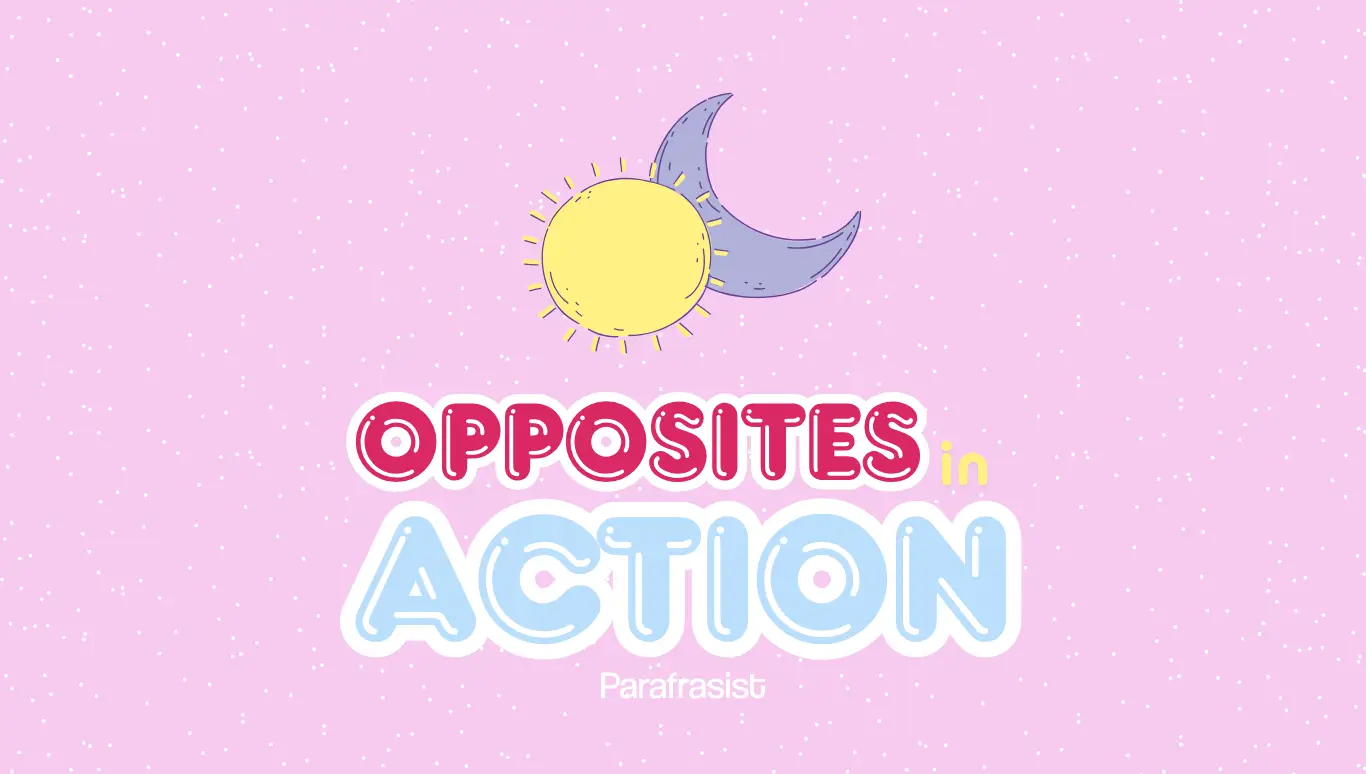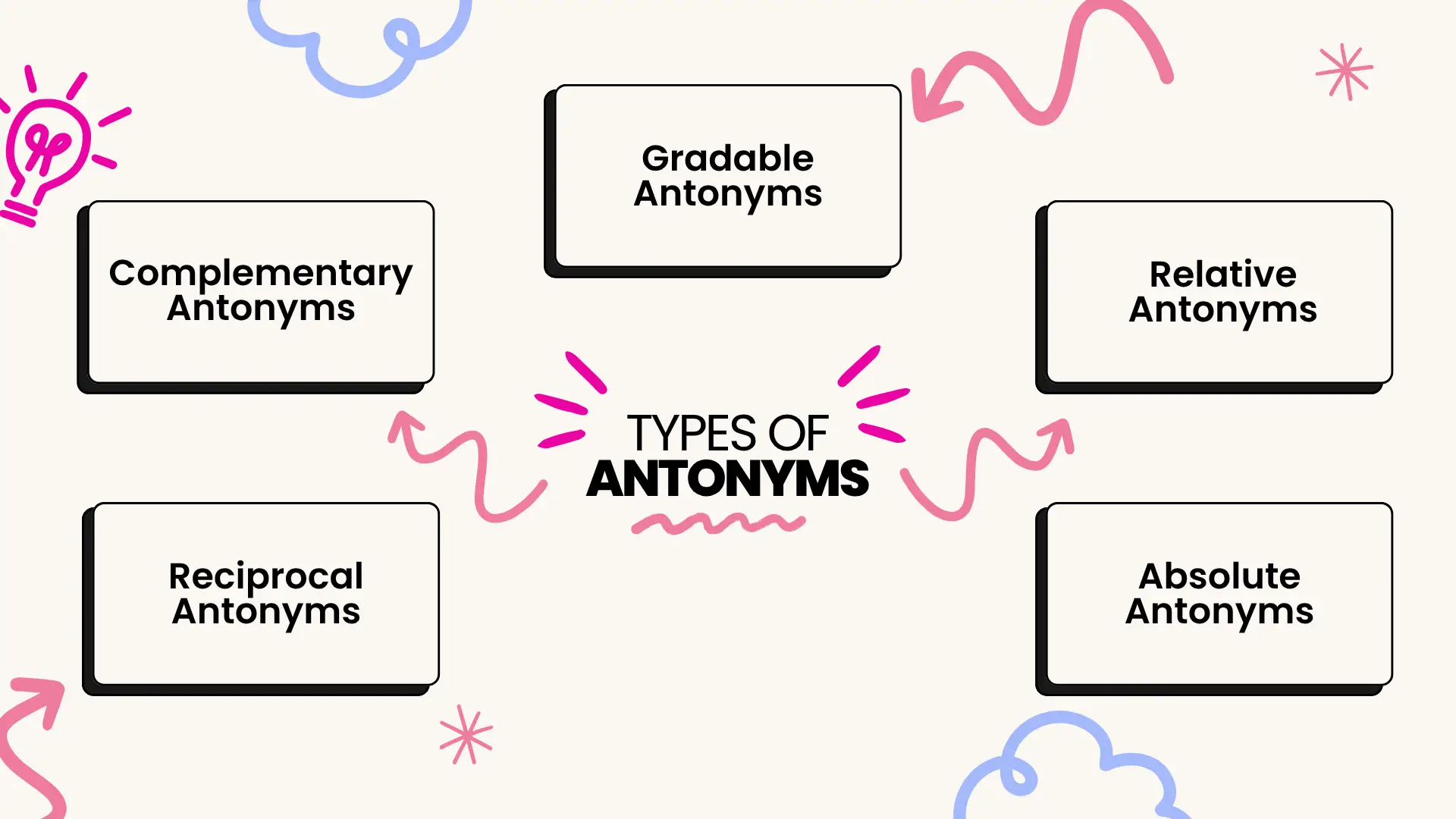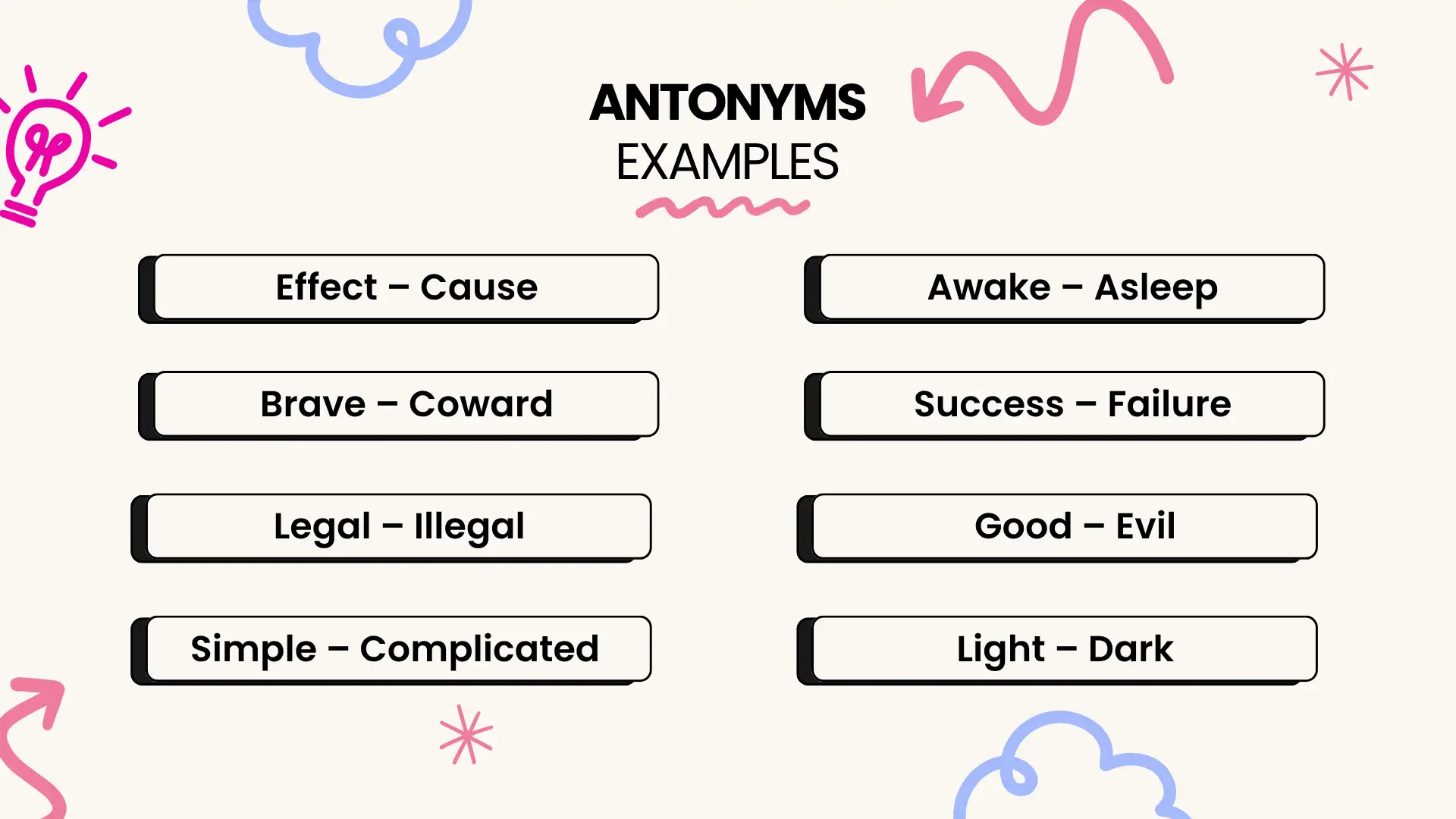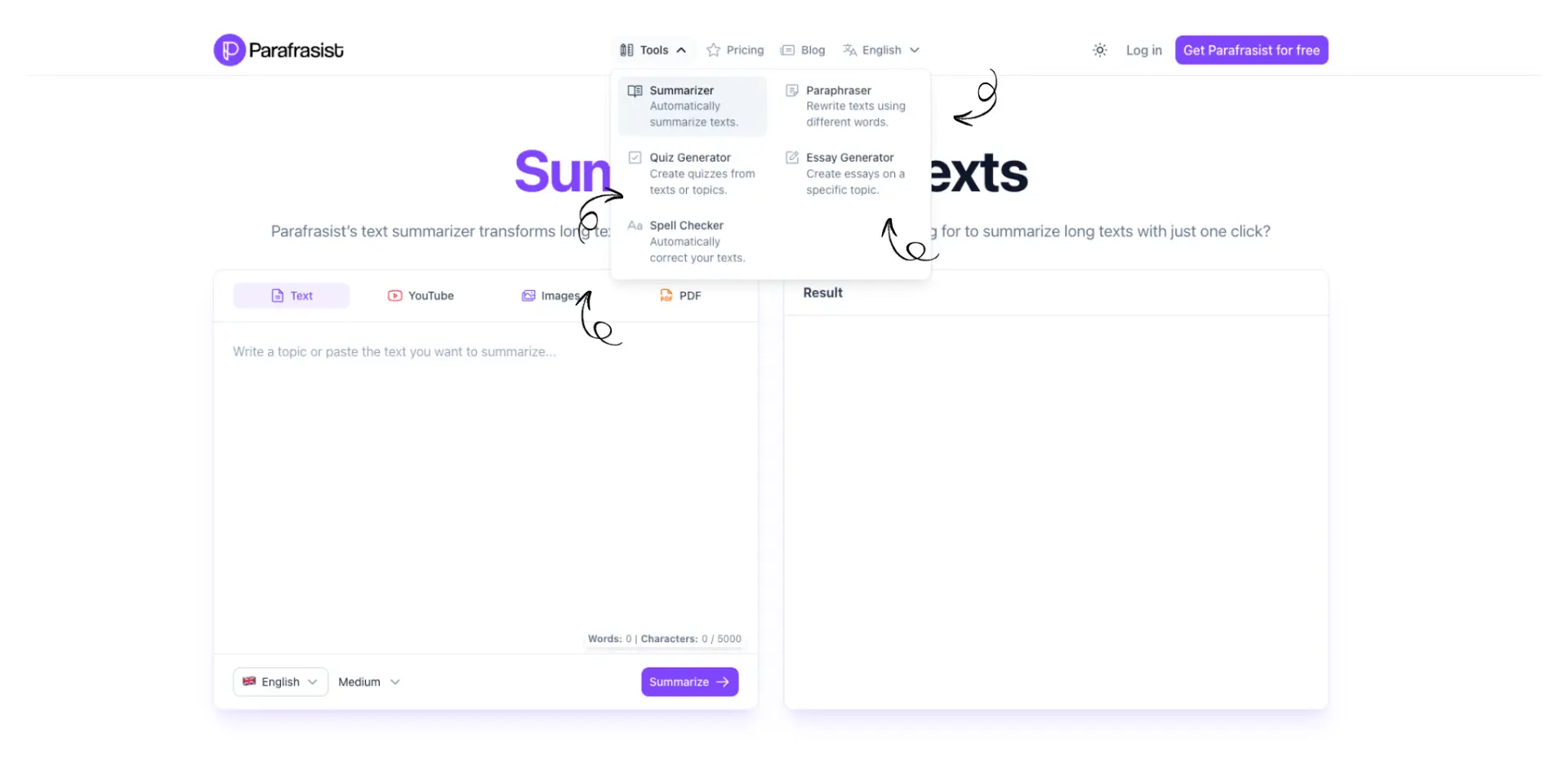What Is an Antonym? Everything About Antonyms: Meaning, Types, and Examples
Victoria | Equipo de redacción
October 28, 2025

You’ve probably used antonyms since your very first years in school — and, just like synonyms, they’ve followed you all your life. When you say “He’s not happy, he’s sad” or “She’s not tall, she’s short,” you’re already playing with language contrasts without even realizing it.
Antonyms are words that express opposite or contrasting ideas, and they’re present everywhere: from casual conversations to academic writing.
Understanding antonyms not only helps you expand your vocabulary but also allows you to communicate with more precision and style.
Knowing how antonyms work is essential for writing and speaking effectively, since they help you express nuances, emphasize differences, and avoid unnecessary repetition.
In this blog, we’ll explain what an antonym is, what antonymy means, the difference between synonyms and antonyms, and we’ll go over the different types, classifications, and examples to help you understand them easily.
What Is an Antonym?
Let’s start with what the RAE (Real Academia Española) says about antonyms:
“Said of a word: that, with respect to another, expresses an opposite or contrary idea, such as virtue and vice, light and dark, or before and after.”
In simple terms, an antonym is a word with a meaning opposite to another. For example, when we say “happy” and “sad,” we’re referring to two completely different emotions. Similarly, “up” and “down” or “day” and “night” are clear examples of opposite terms.
Antonyms are fundamental because they allow us to contrast ideas and make language more powerful.
Imagine saying “I’m not sad today” instead of “I’m happy today.”
They mean almost the same thing, but the second sentence sounds more natural and direct.
That’s one of the ways antonyms enrich your vocabulary and add creativity to your writing (just like synonyms do).
It’s also worth noting that antonymy refers to the relationship between two words that are opposite — it’s not the words themselves, but the link that makes their meanings contrast. Don’t worry, we’ll explain it in more detail below.
Antonymy: Definition
Antonymy is the semantic relationship of opposition established between two words. While an antonym is the word itself, antonymy is the connection that joins the two opposite terms.
For example, between “rich” and “poor” there’s a relationship of antonymy, because they belong to the same semantic field (economy) but express opposite realities.
The same happens with “turn off” and “turn on”, or “enter” and “exit.”
Understanding this concept helps you see how words relate to one another within the language, allowing you to communicate more precisely and write more effectively.
Difference Between Synonym and Antonym
Although they’re often mentioned together, synonyms and antonyms are completely different semantic relationships.
Synonyms are words that share the same or a similar meaning, like happy and content, or glasses and spectacles.
Antonyms, on the other hand, express opposite meanings, like happy and sad.
This contrast helps reinforce ideas and highlight differences in communication.
Synonyms are just as important as antonyms because they make your language richer and more varied. As students, it’s super useful to know a wide range of both so you can adapt your speech or writing to any audience or context—and avoid sounding repetitive.
Types of Antonyms and Examples
Not all antonyms work the same way. Depending on how they relate to each other, we can classify them into different types. Understanding these distinctions helps you grasp how word meanings are structured.
Gradable Antonyms
They express two extremes, but there are intermediate degrees between them.
Example: cold and hot — since you can also have warm, cool, or lukewarm.
This type of antonym is common in descriptive language, because it allows you to express different levels of intensity.
Complementary Antonyms
These have no middle ground: if one is true, the other can’t be. They’re completely incompatible.
Example: life and death — there’s no term in between.
Reciprocal Antonyms
Their meaning depends on each other; they exist as a pair.
Example: buy and sell, give and receive, teach and learn.
These usually express actions that involve a relationship between two people or entities (you can’t buy if no one sells).
Absolute Antonyms
These are the most obvious opposites — what we usually think of when we hear “antonym.”
Example: all and nothing, always and never.
Relative Antonyms
These are opposites only to a certain extent, often depending on context or perspective.
Example: young and old, dull and bright.

Classification of Antonyms and Examples
Antonyms can also be classified based on how they’re formed — not just their meaning. There are two main types: morphological and lexical antonyms.
Morphological Antonyms
They’re created by adding a prefix that changes the original word’s meaning.
Common prefixes include a-, anti-, contra-, dis-, in-, and im-.
Examples:
do → undo
happy → unhappy
possible → impossible
real → unreal
Lexical Antonyms
These come from completely different roots and share no morphological connection.
We usually learn them naturally, as part of our everyday vocabulary.
Examples:
night → day
white → black
add → remove
More Antonym Examples
Now that you know all about antonyms, here’s a list to expand your vocabulary and help you use them in your writing:
effect – cause
brave – coward
suffer – enjoy
legal – illegal
mention – omit
implicit – explicit
accept – reject
increase – decrease
frozen – melted
kind – rude
awake – asleep
win – lose
success – failure
give – take
fiction – reality
simple – complicated
natural – artificial
faithful – unfaithful
funny – boring
question – answer
good – evil
buy – sell
up – down
love – hate
light – dark

Antonyms are a fundamental part of language because they help us express contrasts, opposites, and shades of meaning.
By mastering them, you can make your communication clearer, sharper, and more expressive.
If you want to keep improving your language skills, visit Parafrasist!
You’ll find AI-powered tools to paraphrase, summarize, write essays, correct texts, and even practice with interactive quizzes — perfect for learning antonyms and much more.
